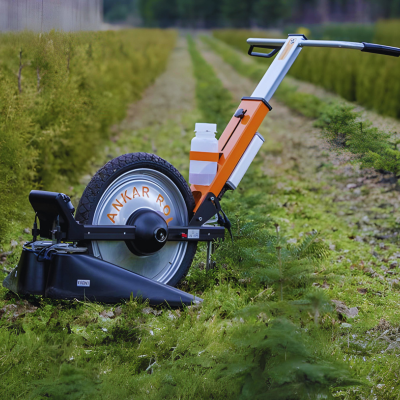
Controlled droplet application (CDA) sprayers offer an alternative way of delivering herbicides and pesticides to traditional backpack sprayers. This type of kit will only really be used in a professional setting so we will compare pricing to professional quality backpack sprayers.
A high-quality backpack sprayer will cost between £100 and £150 + VAT. You can get a cheap CDA sprayer for around the same price as this but, to be honest, if you want professional quality kit you will need to pay considerably more. A good CDA sprayer with ultra low volume (ULV) capability will set you back between £500 and £800 + VAT. This will have the build quality and functionality you would expect for a professional spraying environment. To learn more about the difference between different kinds of sprayers and why CDA/ULV sprayers are the optimal means of spraying products such as glyphosate, watch our video here.
So, if you are spending £700 on a good quality CDA/ULV sprayer verse £150 on a good quality manually pumped backpack sprayer, is it worth the difference? What is that extra £550 doing for you?
Chemical savings
Well, essentially, CDA technology means you can use less chemical to do the same job and this leads to costs savings over time. For typical weed killing applications you can use between 50% and 70% less active ingredient than in a manually pumped sprayer. How this is achieved is explained here.
So, let’s assume you can use half the glyphosate you normally use. A 5-litre container of glyphosate 480 is about £60 + vat at the time of recording. So, the question now becomes how much do you use? For annual weeds, Glyphosate 480 should be applied at 1 litre per hectare and for broad leaf perennial weeds this is 3.75 litres per hectare. So, if you are treating 10 hectares doing this twice a year you will need to use either 20 litres for annual weeds or 75 litres for broad leafed perennials. So that equates to £240 or £900 of glyphosate per year. With a CDA/ULV sprayer this could be easily halved so you are saving £120 or £450 per year on chemical usage.
Time
With a traditional backpack sprayer, you will need to dilute the glyphosate. Typically, this will mean you will need to spray about 80-250 litres of liquid per hectare. So, you would dilute 3.75 litres of glyphosate in about 200 litres of water and then apply that. With a large 20-litre backpack that is 10 refills per hectare. Over the course of the 2 applications per year to 10 hectares that’s 200 tank refills. With the Mankar CDA/ULV product you use the product neat, and the 1 litre bottle will do an entire hectare so that’s 20 refills per year. In a day of spraying, it is unlikely that an operator will need to refill the tank, so, basically, they can spray all day without any downtime. If it takes 5 minutes to return to the vehicle to fill the tank and remix the glyphosate then that’s 16.6 hours of wasted time per year – even at the basic national living wage of 11.44/hr that’s £190 per year of wasted time saved. And each return to refill, is very unlikely to take just 5 minutes so that saving will be considerably higher!
Ergonomic aspect/Effort
Using a manual sprayer all day can be tiring work. Tired workers doing repetitive tasks tend not to perform so well. The Mankar spray is effortless. It weighs far less than lugging around a 20kg backpack full of liquid and does not require any manual pumping. Another disadvantage and danger that we all know: the back tank starts to leak after some time, causing drops to fall on clothing or directly on the lower back (in warm weather, workers sometimes forget to wear protective clothing).
Conclusion
So even with the worst-case scenario of very low application rates we can see the that the CDA/ULV sprayer will give cost benefits of around £310 per year rising to £640 and this is for a modest 10 hectare per year overall spraying. Putting this in context, that’s about 110 hours of spraying per year to reap these cost savings. Bear in mind that these figures are based on the worst-case scenario of only using half the normal glyphosate so savings are normally much higher than this.
